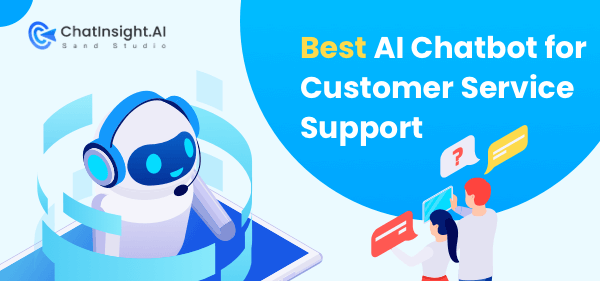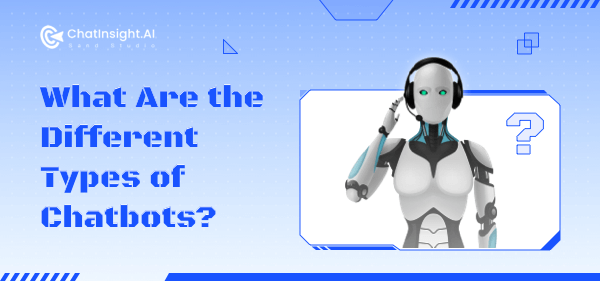Chatbot Maintenance Tips and Best Practices
Chatbots are very helpful to businesses. They automate repetitive tasks and resolve matters in seconds. A chatbot is intelligent and powerful in resolving customer queries. Clients are deploying chatbots in different departments, such as marketing, customer support, and sales.
However, chatbots need training and maintenance to offer accurate results. The supervision ensures bots match the pace of the growing needs and the market. Maintenance will also fix technical issues. It will highlight a security flow to protect the brand’s identity. Keep reading to understand the importance and benefits of maintaining chatbots.
1What is Chatbot Maintenance?
Maintenance of the chatbot means updating the knowledge base to improve the ongoing services. The response is enhanced, and the performance is closely supervised. Maintenance also includes bug fixes and updating NLP algorithms. The clients aim to ensure the chatbot is updated with extreme accuracy because customer satisfaction is directly linked to its performance.
There are many ways to assess the performance of a chatbot. For example, the client can see if the chatbot is interpreting feedback correctly. An updated knowledge base ensures accurate results. Furthermore, maintaining Natural Language Processing algorithms means organic conversations. Testing and debugging highlight errors before they become serious.
Maintenance of chatbots ensures the functionality is not interrupted. In other words, the chatbot is active 24/7, day and night for the customers. The reduced downtime improves user interactions. The satisfaction levels rise. Furthermore, regular assessment will resolve issues. The conversations flow very well. The client can introduce new features to meet the evolving customer needs.
2Whats You Need to Focus on for Pre-Maintenance Preparation
Setting Clear Objectives
When it comes to chatbot maintenance, the client must have set clear aims. The objectives are the goal of the chatbot. Therefore, set aims regarding chatbot repair. You can align the goals with customer support, product development, and sales teams. The collaboration will set a clear direction for the chatbot’s future growth. The services will improve, and there will be no confusion regarding the chatbot services.
Identifying Key Performance Indicators (KPIs)
Evaluating the performance of bots becomes clearer when it is cross-referenced with the key performance indicators. KPIs are quantifiable parameters that allow the clients to assess the chatbot’s services against a set of targets or objectives.
KPIs for bots usually include the number of interactions, frequently asked questions, the time it took to complete goals, bounce rates, and fallback assessment. It leads to a better understanding of areas of improvement and where the chatbot is lacking.
Tools and Resources Needed for Maintenance
If proper research is not taken in selecting the tools for maintenance, the engagement is likely to get hurt. Furthermore, the conversion rates will suffer, too. Picking the right tools and resources ensures harmony. Chatbots will do their jobs faster. Moreover, it will be a lot easy to integrate the bot with the existing tools. The tools will ensure the bot adapts to the growing demand as well.
3Regular Maintenance Activities
Analyzing User interactions
Attaining user feedback is a crucial part of chatbot upkeeping. The clients can pay close attention to the customer queries as well as complaints and suggestions. It will allow the seller to understand the customers better which leads to enhanced business decisions.
The chatbots can analyze customer feedback to identify the areas of the brand’s improvement as well. In the next step, the client can implement crucial changes so the bots are highly effective. Analyzing the interactions will give answers about response time and error rates as well.
Identifying Common Issues
When the clients identify common mistakes with the chatbot, it prevents cold user experiences. Dead-ends chats can be avoided, which breaks the flow of the conversation. Recognizing errors in the chatbot’s performance is not robotic or frustrating.
The algorithm can inject humor into the conversations. Furthermore, keeping the language simple minimizes repetitive issues. The sentences must be short and slowed down. Do not burden the bot with huge chunks.
Keeping Information Up to Date
The client is continuously updating the content on the website so it ranks high on the search results. It ensures maximum engagement as more customers learn about the brand. The same logic applies to the chatbots as a monotonous feature reduces conversion rates.
You can change the bot’s wording to influence the customer journey positively. Updating information and content improves assets. The cohesion of the brand and the consistency in tones impress the buyers. The engagement rises.
Expanding the Chatbot’s knowledge base
Chatbots need a company’s knowledge base to work properly. Otherwise, it will not offer relevant and accurate responses. AI chatbots do not operate like intent-based chatbots. However, their knowledge base must be updated with the latest information so the customers do not receive outdated data.
The client can submit new product details and FAQs so the buyers have access to the most recent data. It will ensure the chatbots are up to date and provide valuable answers to the users.
Software Updates and Bug Fixes
Consistent checking of the performance of the chatbots will improve the performance. However, changes cannot be identified without regular testing and debugging because the bot is not performing right. Extensive tests ensure the chatbot's functions are performing as intended. The chatbot does not have technical glitches and bugs.
It will ensure a seamless user experience. Furthermore, recognizing bugs and fixing them also means there will be no disruptions in the future. The client can regularly update the software to introduce new features in the chatbot for maximum engagement.
Platform Compatibility Checks
The customers’ needs are constantly evolving. Therefore, the bot must represent the changes. Otherwise, the user will reject it as outdated. A compatible chatbot analyzes user interaction perfectly as it identifies new terms and slams. It will highlight patterns and customize interactions to meet expectations.
In addition, compatibility checks also ensure the chatbot represents the latest trends. It will incorporate new technologies to impress the audience. Furthermore, the bot knows about the latest news and research.
4Advanced Maintenance Strategies
Incorporating User Feedback
Clients can introduce a feedback loop into the chatbots so it recognizes the mistakes through the customer feedback. It will analyze the errors and update the data so the actions are not repeated. The client can also train the feedback with a machine-learning model to enhance its accuracy.
User feedback is a crucial source of input for AI chatbots and their performance. When the feedback is incorporated, pain issues are professionally addressed. As a result, the responses improve the chatbot is more advanced in answering queries. You can customize the chatbot layout with a link or a button where the user can freely submit feedback.
Utilizing AI and machine Learning for improvement
AI-based chatbots use machine learning to do their job. The chatbots can learn and upgrade through their performance. In addition, bots also use Natural Language Processing to communicate with the user. The client can improve the NLP features to upgrade its linguistic model.
Furthermore, the client can also input a new set of data to extend its vocabulary. It will allow the chatbot to understand the customer’s interactions in extensive detail. The chatbot will respond faster to the user's questions. The frequency of updating machine learning depends on the chatbot’s patterns and content updates.
Scalability and Expansion
Chatbots have excellent scalability. As machine learning expands the scope, the bots can handle a larger volume of queries. They are able to process user interactions a lot faster. Furthermore, they do not require as much workforce as before, which results in cost-saving. The staff can focus on sensitive issues. Time is not wasted, and resources are better allocated.
After the scalability of a chatbot, you can integrate it with other systems more easily. It leads to smooth interactions. You can check the APIs of the chatbots from time to time to overcome compatibility issues, if any. As a result, the functions of the AI chatbots improve across all channels.
5Troubleshooting Common Chatbot Issues
Technical Glitches and How to resolve them
Excellent use of natural language processing and machine learning are the secrets to overcoming issues related to chatbot maintenance. The bots must be programmed better so they interpret the conversation while communicating with the user. After updating the algorithm, conversational dead ends can be avoided. The bots will make better decisions and keep the chat going.
Chatbots also suffer from information overload. The bots come off as overly excited. When emojis get involved, it looks like a scam. The client can provide the users with relevant commands that are helpful during the conversations. The command can change topics or offer more details about the topic.
Handling Misinterpretations and Incorrect Responses
AI-based chatbots can give wrong answers because of their limited scope and algorithms. The chats are also misinterpreted if the bots are not properly updated or trained. Incorrect answers are also due to insufficient training, inconsistent algorithms, and misunderstanding complex user queries.
The client must check the logs for false positive conversations. They can edit the intent so the actions are not repeated. Furthermore, the client can improve the intent to address the concerns better. In addition, you can introduce NLP into the chatbots so the technology feels more human. The NLP algorithm will decrease the probability of inaccurate answers because the chatbot can now understand the context and search intent.
Improving User Engagement and Satisfaction
If the client wishes to witness an increase in user engagement, they can use a few different welcome messages to see how the user will react. Secondly, the client can introduce visual elements to attract the users. In addition, ensure the chatbot is friendly and easy to use so it will generate a lot of conversations than before.
The client can also customize the chat according to age and tone. A well-designed chatbot will improve the user experience overall. It will answer queries promptly and navigate the users on the website. A chatbot’s customer satisfaction rises when the information offered is helpful. It can facilitate transactions and offer relevant product recommendations as well.
5Best Practices in Chatbot Maintenance
Establishing a regular maintenance schedule
The clients are encouraged to set up a regular chatbot maintenance schedule and stick to it. An ideal once-a-week maintenance is necessary. However, the frequency can increase depending on a number of factors. For example, the client can factor in chatbot complexity, user patterns, and how often the content is updated.
Consistent assessment and a proactive approach toward maintenance prevent the chatbot from becoming outdated. Its services will not degrade. The users will stay pleased with the quick responses with the latest information. Therefore, continuous improvement is encouraged for user interaction and brand loyalty.
Collaborating with IT and customer service teams
When chatbots are integrated with customer service and IT teams, they are able to provide quicker responses. They have updated info about deadlines, policies, organizational procedures, and status updates. Furthermore, the collaborative chatbots save the trouble of repetitive calls, meetings, and emails. As a result, the staff has more time for important tasks.
Chatbots will also automate processes such as sending notifications, alerts, reminders, and reports. The organization experiences an increase in accuracy, efficiency, and accountability because the chatbots are linked to different departments. The clients can further improve the chatbot's engagement with the help of surveys, quizzes, and polls.
Ensuring Compliance and Security
AI chatbots are a central data hub for your organization. The clients can attain insight into customer preferences and behavior. You can learn about sales, website traffic, and much more. The framework will improve as chatbots benefit from detailed analytics. The machine learning will automatically collect and analyze data from previous customer interactions.
The clients must store data in alignment with GDPR. Furthermore, they must ensure compliance with local and federal laws where the company is registered. The collected information must be secure and encrypted, making it inaccessible to malicious individuals, unknown third parties, and competitors.
If a chatbot is not maintained well, it will quickly become outdated. Furthermore, it may fail to deliver the responses the user hopes. Regular upkeep is necessary so the chatbot is ready for the challenges ahead. Therefore, continue improving your chatbot so it sustains its efficiency. Remember the business goals and KPIs that may influence the chatbot’s performance for consistent results.







Leave a Reply.